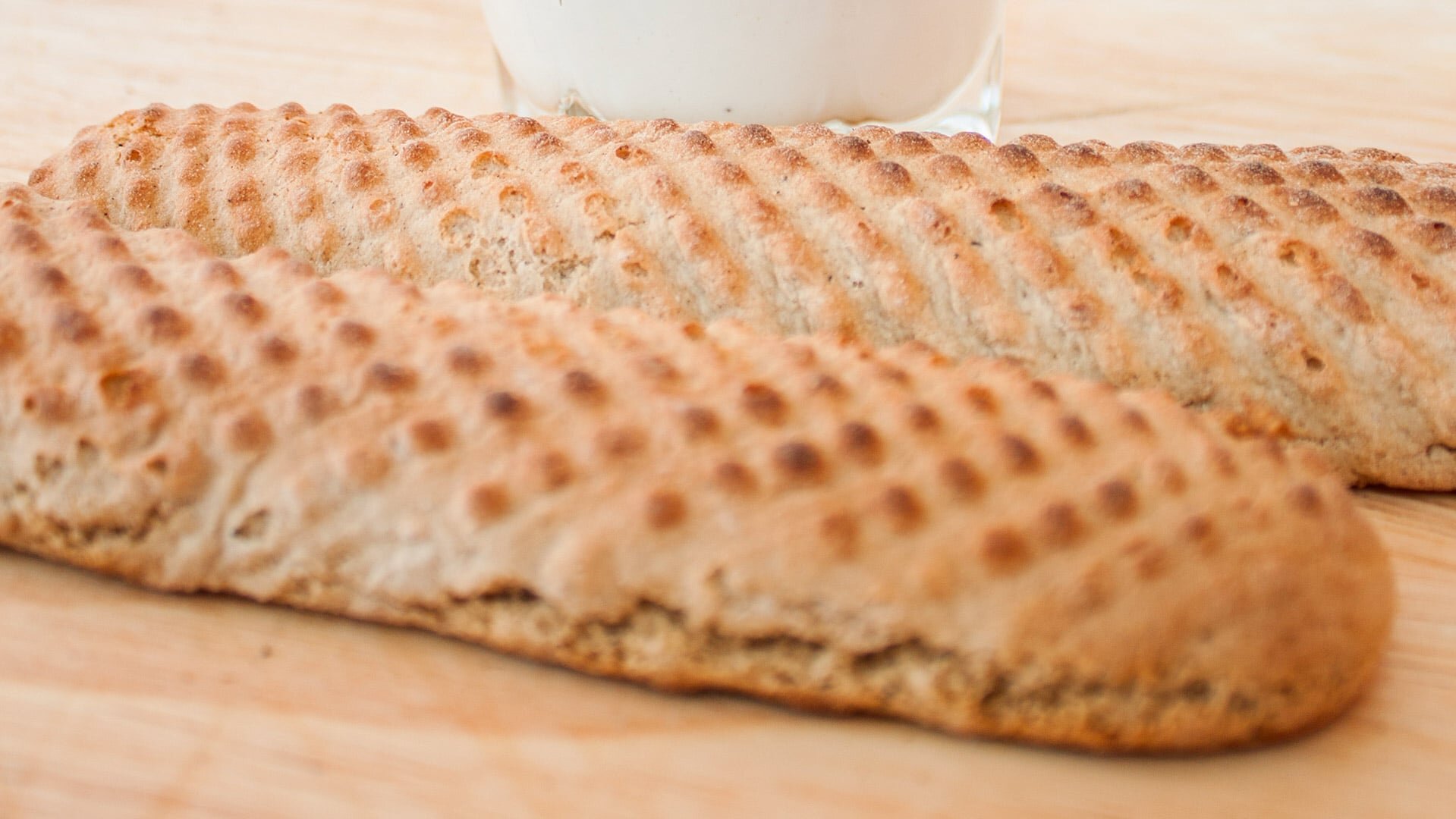Biscuits of Badia Mustazzoli

Dolci di badia are made with traditional local ingredients – almonds, citrus fruits such as citron, lemons and oranges, and honey – revealing their richness and precious variety.

Dolci di badia are made with traditional local ingredients – almonds, citrus fruits such as citron, lemons and oranges, and honey – revealing their richness and precious variety.
A dominant ingredient in Sicilian cuisine, and indeed western cuisine in general, garlic is an almost alchemical ingredient in recipes with unmistakable flavours, where its strong smell and aroma help define theidentity of a dish.
Fig biscuits (also known as “Buccellati” in other parts of Sicily) form part of the confectionery traditions of the west of Sicily, especially in the Agro Ericino and Valderice areas,
This traditional fresh pasta from the cuisine of Trapani, in the shape of thin tubes wound around each other, is said to have inherited its name from the tool traditionally used to make it.
They have their roots in the volcanic soil and unique climate characteristics of the island of Pantelleria.
Shaped like an elongated ravioli, these much-loved local sweets are found in every bar and bakery from Castellammare to Marsala. Cassatelle are also one of the island of Favignana’s most quintessential sweets!
These “cassatedde” – traditional ravioli from the west of Sicily, notably the Agro Ericino area – have a strong flavour.
Couscous is a semolina-based dish of Berber origin and a traditional part of North African cuisine.
This vegetable soup (with artichokes, cauliflower or broad beans) originates from the salvaging of the semolina, prepared for couscous, that turned out badly. The French origins of this dish are said to lie in its name: “flasque”, meaning soft.
The aristaeomorpha foliacea – the “gambero rosso” or giant red shrimp – a delicious crustacean that is appreciated by chefs all over the world, is strongly linked to the history of the town of Mazara del Vallo in the far west of Sicily, separated from Tunisia by just under two hundred kilometres.
A shortcrust pastry sweet, whose ancient tradition hark back to Erice’s convents of San Carlo and Santa Teresa, where the cloistered nuns would prepare their delicious recipes.
Cultivated in rotation in the distinctive soil of the Saline di Trapani and Paceco nature reserve, which is characterised by its firm, clayey texture, the Cartucciaru yellow melon is a Slow Food presidium, as it maintains one of the most authentic agricultural traditions in the Trapani area.
These sweets with pumpkin derive from the exquisite claustral tradition, a tradition that was created to support the convents – as pastries represented a source of income – and which has become a cornerstone of Sicilian confectionery art.
The Nocellara or Castelvetrano olive, has a green colour and intense taste, a fleshy, dense shape and texture and a delicious flavour.
In its simplicity, pane cunzato, or seasoned bread, has become an important part of the cuisine of the west of Sicily, especially in its most informal incarnation, as street food.
Bread, with one form for nourishment and another for communication, sets the tone for celebration and for work.
The defining ingredient of this bread is tumminia (timilia), an ancient, dark-coloured wheat variety, which is mixed with white flour, making it a soft and flavoursome bread of exceptional quality.
This delicious pizza is an ambassador for local ingredients, which combine perfectly to enhance the traditional flavours of the local produce.
Its name derives from the main ingredient in its recipe: oregano.
A dish of humble origins, but for the most discerning of palates.
The “Pizzutello” tomato thrives in the salinity of the red, clayey soil in which it is planted, in the Ericine valleys that stretch down to the sea towards Trapani and Paceco.
This category comprises the various products derived from tuna processing: tuna in olive oil, tuna offal, ventresca (tuna belly), tuna salami or “ficazza”, tuna heart, tuna bottarga and other varieties.
Considered “white gold” since ancient times, salt is one of the oldest minerals formed on Earth and has always been valued by humans: for preserving and seasoning food, as a remedy against certain endocrine imbalances and for body care, as it is rich in magnesium and has a mineralising effect on the bones.
The Atlantic bluefin tuna (Thunnus thynnus) is the most valuable of all tuna species. This large pelagic predator was once the king of the Mediterranean, and its fishing in this sea has ancient roots.
The only Italian PDO stretched curd cheese produced from sheep’s milk, Vastedda is made from the milk of the Belice sheep, an indigenous breed that is found in the area between Trapani, Agrigento and Palermo.
This name, of Arabic origin, means sheep’s milk ricotta and whey.
We’ve sent you an email. To activate the newsletter, click on the link you will find in the message. Thank you!
Try again